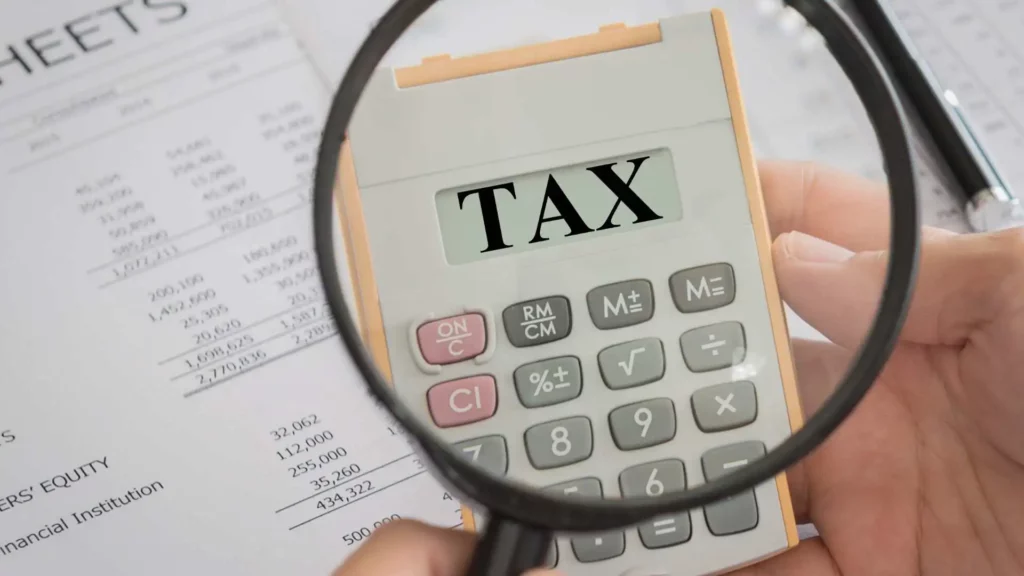Tax filing for incarcerated individuals poses unique challenges and considerations compared to the general population. Navigating this process requires a clear understanding of tax obligations, gathering necessary documents, exploring filing methods, and acknowledging potential impacts on income and expenses. Let’s explore the query, ‘How to file taxes for someone incarcerated.’
This comprehensive guide aims to assist in filing taxes for incarcerated people, ensuring compliance with IRS regulations while addressing specific circumstances that arise during incarceration.
Navigating Tax Filing for Incarcerated Individuals
Incarcerated individuals, like any other taxpayer, must file a tax return if their income meets specific thresholds set by the IRS. Many incarcerated individuals engage in in-prison jobs that often provide minimal or no direct monetary compensation. Instead, these facilities compensate individuals by depositing funds into their commissary accounts. Despite the absence of typical employer-issued tax forms like the 1099-MISC or W-2, the IRS considers these credited amounts taxable income.
Understanding Tax Obligations in Incarceration
Even during incarceration, individuals are responsible for filing taxes if they meet specific income thresholds determined by the Internal Revenue Service (IRS). However, the necessity and method of filing can vary based on individual circumstances. Typically, income earned within prison rarely surpasses the threshold requiring tax return filing.
However, if income exceeds $12,000 ($24,000 for married couples filing jointly), filing a tax return might be necessary. Such income often originates from sources beyond the prison, like interest, annuities, or retirement accounts. Notably, income from these external sources remains taxable even during incarceration.
Maintaining Taxpayer Status
Maintaining taxpayer status during incarceration hinges on income earned within and outside prison. Incarcerated individuals must assess their income sources to determine their filing obligations and whether they meet IRS criteria for maintaining their taxpayer status.
Exemption from Filing Requirements
Individuals might qualify for tax filing exemptions in certain instances owing to low income or other eligibility criteria. Specifically, individuals incarcerated at any point within a month are exempt from the Affordable Care Act’s (ACA) mandate of upholding minimum coverage for that particular month. Individuals must claim this exemption on their federal income tax return to obtain it.
When filing for the exemption, individuals should complete Form 8965, Health Coverage Exemptions, Part III, utilizing code F to signify the exemption due to the period of incarceration within the tax year.
Gathering Tax Documents for Incarcerated Individuals
Collecting essential tax documents is a fundamental step in the tax filing process for incarcerated individuals.
Obtaining W-2 Forms
The W-2 form, crucial for tax filing, details employees’ yearly wages and withheld taxes submitted by employers to employees and the IRS. In prison, where jobs often yield minimal or no direct income but credits to commissary accounts, typical W-2 issuance by facilities is rare. Yet, these credited amounts remain taxable.
To acquire W-2 forms reflecting earned income, individuals may contact former employers, family members, or legal representatives to ensure accurate income reporting.
Gathering Additional Documents
Other documents, such as bank statements, investment statements, and receipts for deductible expenses, must be gathered to provide a comprehensive overview of financial activities during the tax year.
Tax Filing Methods for Incarcerated Individuals
Determining the most suitable method for filing taxes while incarcerated depends on the individual’s circumstances.
Self-Filing
Incarcerated individuals have access to primary tax forms within prisons. They can electronically access IRS forms via the official website, including the option for online filing through the IRS’s Free File Software. This program offers guidance for preparing tax returns but with limited error checking and basic calculations.
Some correctional facilities may provide free in-prison tax or legal assistance. However, tax filing complexities might arise, especially for inmates incarcerated outside their home state, potentially necessitating the filing of multiple state tax returns. Sharing experiences and seeking advice from fellow incarcerated individuals can provide valuable insights into these challenges. Additionally, requesting an extension from the IRS can offer more time to file taxes, typically due by April 15, but can vary.
Appointing a Tax Representative
Incarcerated individuals can enlist professional tax preparers by completing Form 8879, permitting e-file providers to submit tax returns to the IRS electronically. This form authorizes generating a Personal Identification Number (PIN) for e-filing, which is especially valuable for inmates with restricted internet access.
The ERO retains Form 8879 for three years and receives confirmation from the IRS upon receipt of a tax return, which is essential for maintaining records. This process facilitates tax filing for inmates, ensuring compliance while navigating limited access to internet services within correctional facilities.
If you need more clarification about the process, consult a tax professional or seek necessary assistance like Beem provides online.
Tax Considerations for Incarcerated Individuals
Understanding the implications of incarceration on income, expenses, and tax liabilities is crucial for accurate tax filing.
Impact of Incarceration on Income and Expenses
Incarceration often disrupts income sources, leading to reduced earnings from in-prison jobs and potential alterations in investment income. Additionally, it can result in increased expenses for legal fees or family support. Understanding these shifts in income and expenses is crucial for incarcerated individuals to navigate tax implications accurately during and after their confinement.
Potential for Back Taxes
Back taxes refer to taxes owed from previous years that were not paid or reported. Incarcerated individuals may face potential back taxes due to failure to file or pay taxes while in prison. Income earned outside prison and unfiled returns might lead to tax liabilities. Addressing these obligations upon release is vital to avoid penalties and resolve outstanding tax matters.
Additional Resources for Incarcerated Taxpayers
Accessing resources and assistance specific to incarcerated individuals can significantly facilitate tax filing.
Internal Revenue Service (IRS)
The IRS offers guidance and resources tailored to incarcerated individuals, including accessible forms, publications, and information through their website or mail.
Taxpayer Assistance Centers (TACs)
TACs provide in-person assistance and guidance on tax-related matters. While access may be limited from correctional facilities, seeking assistance upon release could be beneficial.
Prisoner Re-entry Programs
Prisoner re-entry programs are pivotal in assisting individuals post-release, providing comprehensive support, including guidance on tax-related matters. Following the IRS Prisoner Tax Compliance Summit in August 2010, the IRS developed a dedicated service team. This team aims to enhance prisoner tax compliance, minimize erroneous refunds, and improve the management of prisoner tax returns.
Established as part of this effort, the IRS Prisoner Outreach Initiative Team focuses on outreach and assistance as outlined in the broader Prisoner Tax Compliance Strategic Plan’s objectives.
Conclusion
Understanding how to file taxes for someone incarcerated involves navigating a complex web of regulations, exemptions, and considerations. Familiarizing oneself with the nuances of tax obligations, gathering essential documents, exploring filing methods, and acknowledging the impact of incarceration on finances is vital to ensuring compliance with IRS requirements. Leveraging available resources and seeking professional assistance can significantly alleviate the challenges associated with tax filing during incarceration.
By addressing these considerations, individuals can fulfill their tax responsibilities and mitigate potential issues during and after incarceration. You can also check out Beem Tax Calculator to get a quick and accurate estimate of your federal and state tax refund.






























